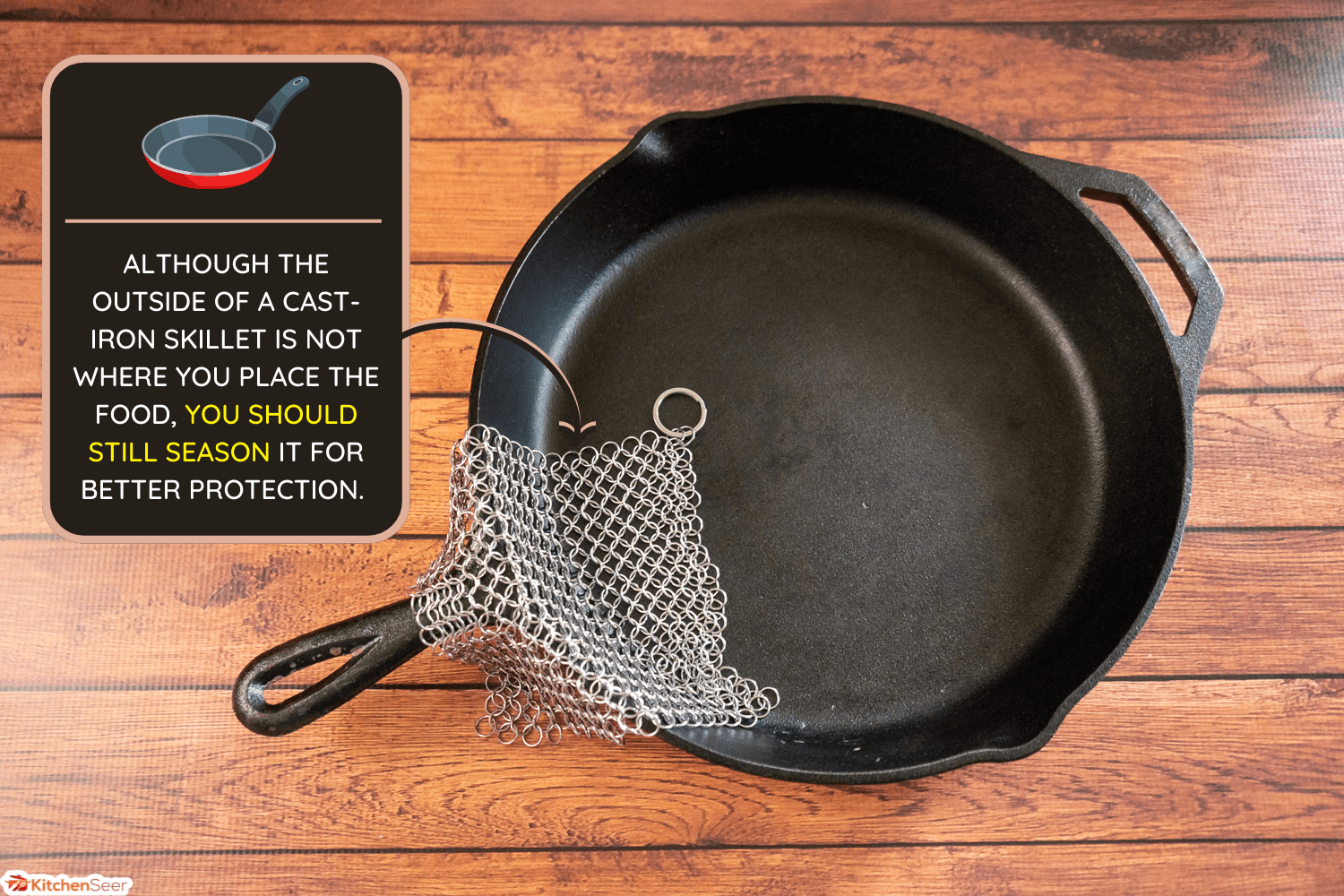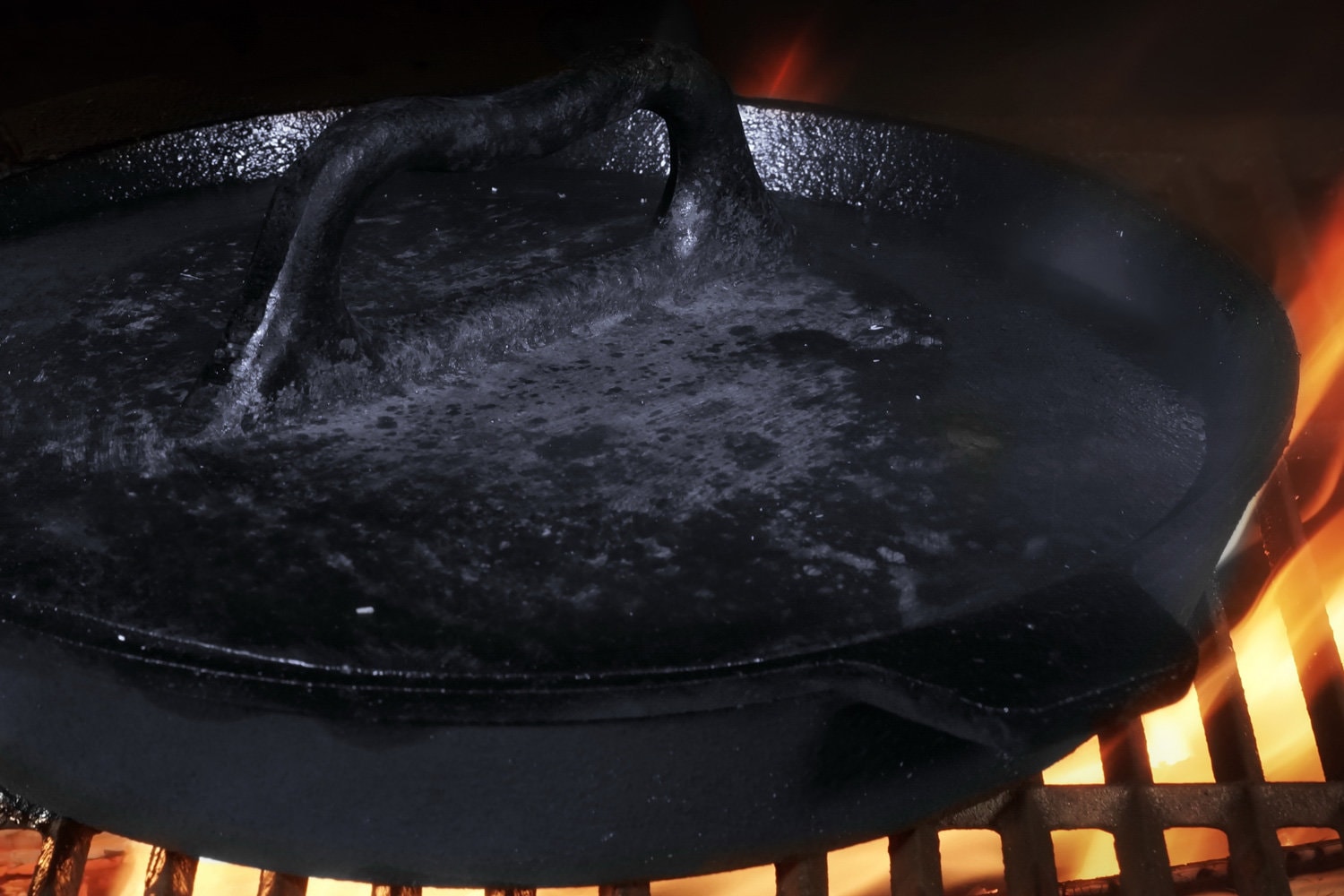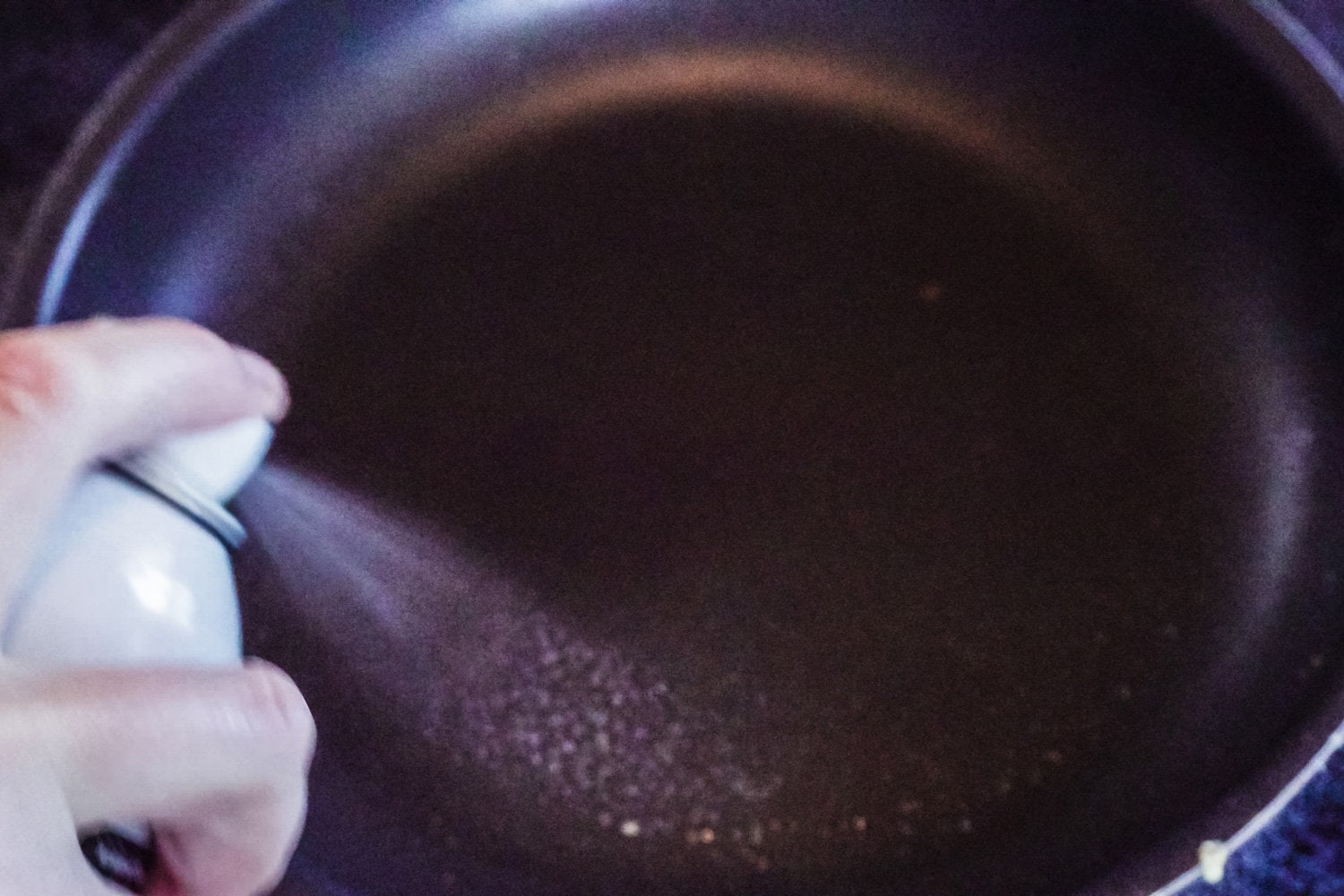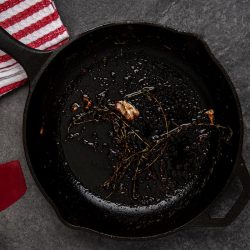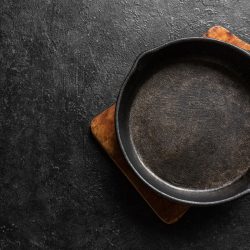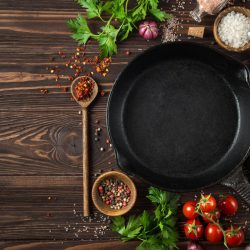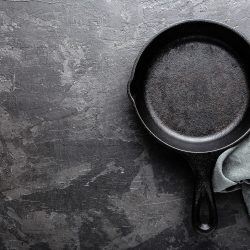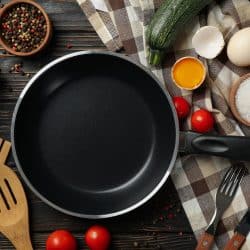Even though it is heavy and dense, cast iron is a porous material. This means it has tiny holes that need seasoning inside and outside, from its rim to bottom.
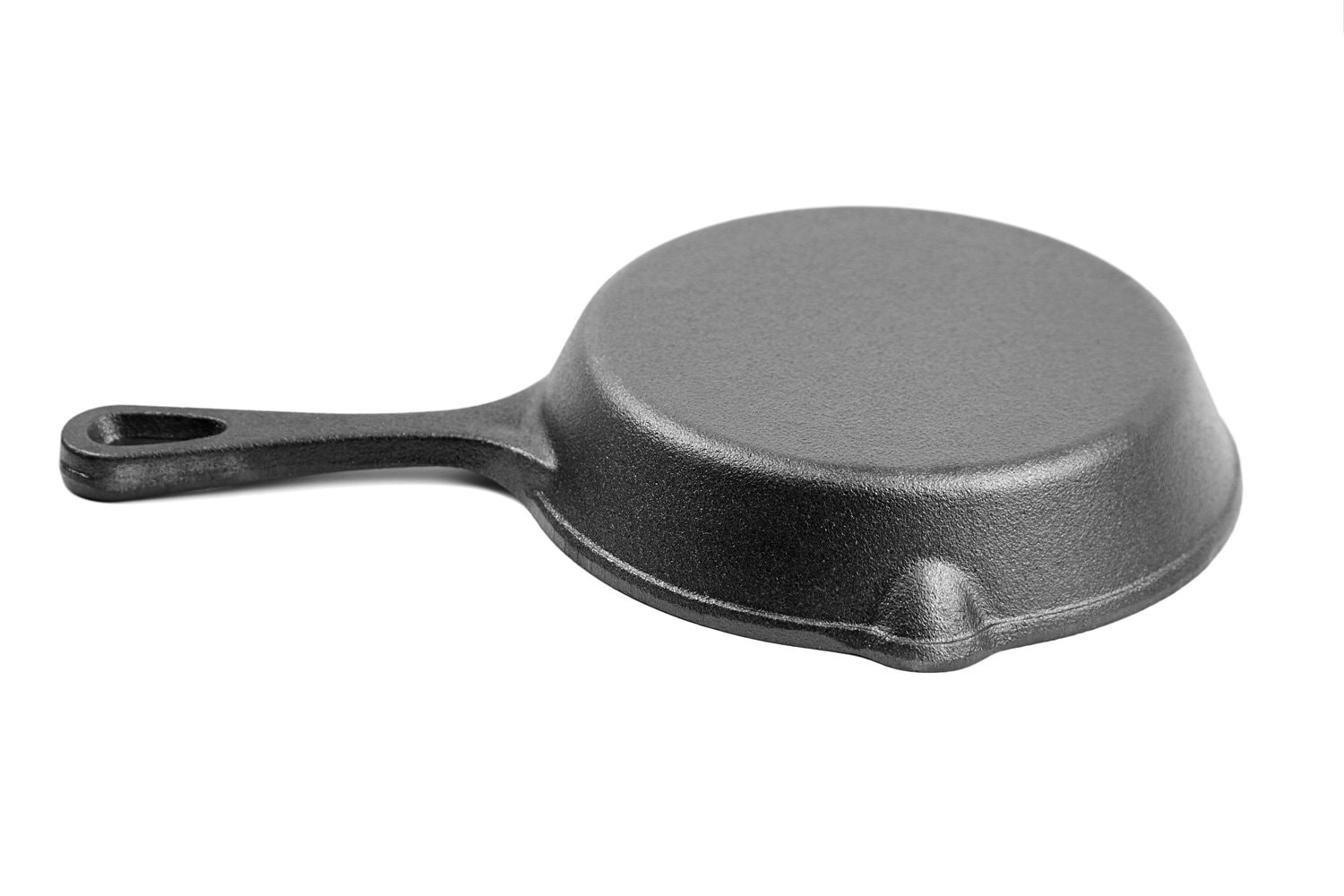
People also call it the curing or polymerization of oil. This process is like baking a dish to create a sealed layer in every nook and cranny. It offers several advantages that allow its owners to pass it down to the next generations.


Click here to see this pre-seasoned cast-iron skillet on Amazon.
Why Do You Season the Outside of A Cast-Iron Skillet?
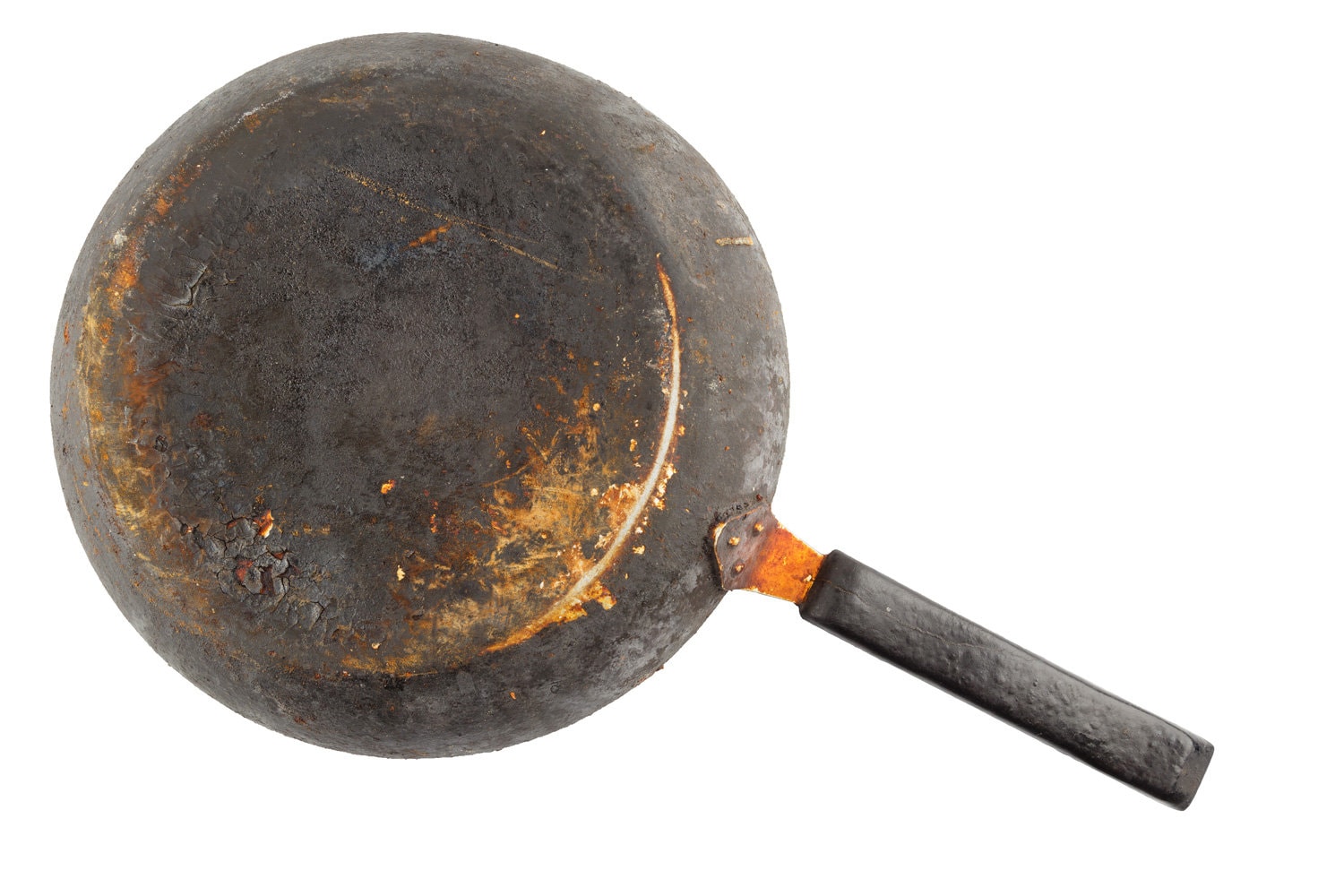
Curing plays a valuable role in maintaining any cast-iron cookware. Here are the benefits you can reap from a seasoned skillet:
- Ensures the easy cleaning of the cookware
- Removes leftover flavor or gunk
- Eliminate unnecessary moisture and humidity
- Prevents rust formation and corrosion
- Strengthens the pan structure
- Produces smooth and semi-gloss texture
- Resists the food from sticking
- Limits the leaching or transferring of iron to your food
- Facilitates even heat distribution
What Is The Best Way To Season A Cast-Iron Skillet?
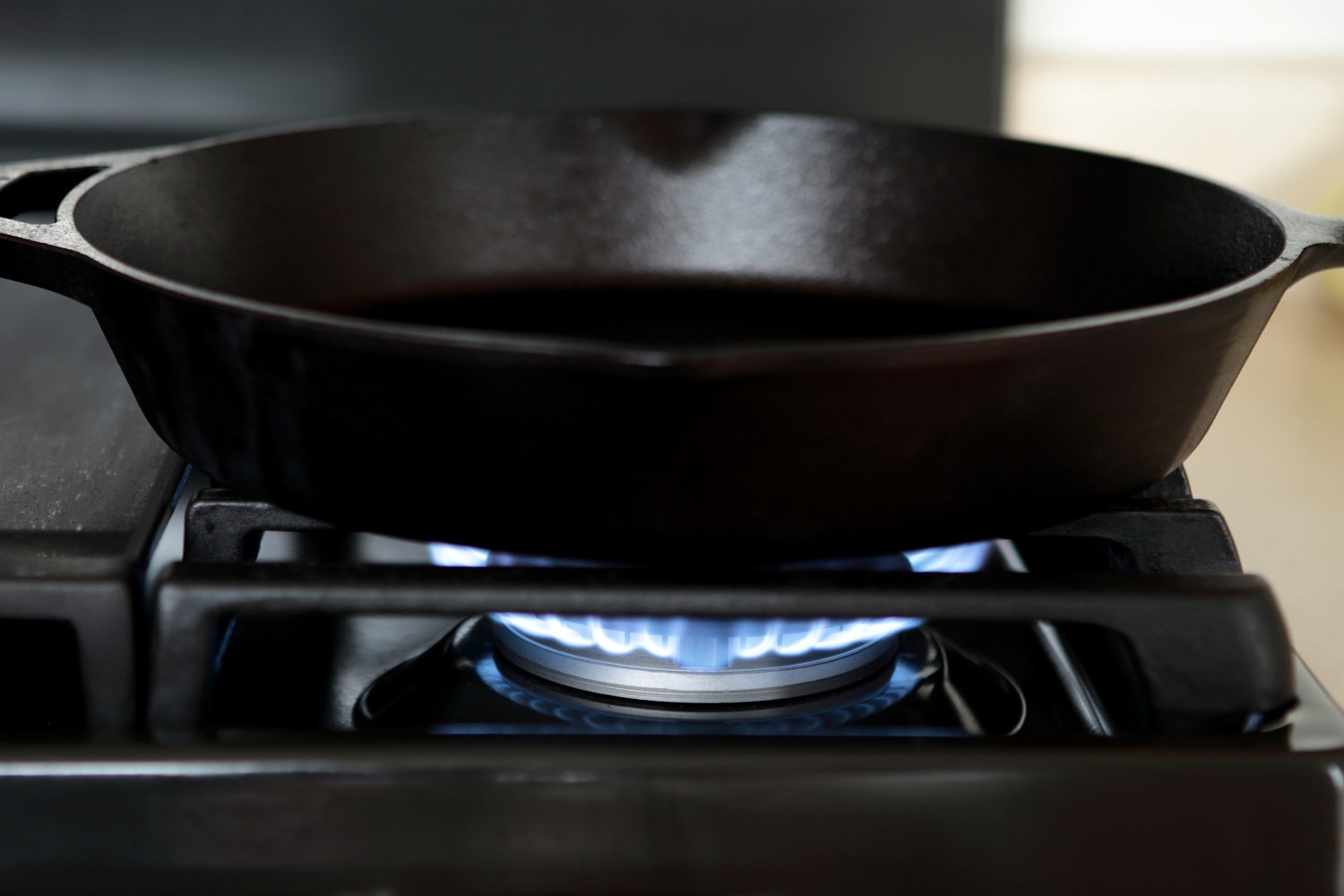
For the oil to be absorbed, you must subject the skillet to heat. Whether old or new, there are two common ways to season your cast-iron skillet: oven or stove top method. Select whichever heating source you have or find efficient.
Oven Vs. Stove Top Method
Unlike stove tops, convection ovens provide consistent heating to your cast-iron cookware. In contrast, gas, induction, or electric stoves are handier than the former because they are readily accessible and observable.
As a result, you can wipe the excess or add more oil. Similarly, applying a new layer is quicker whenever the oil bonding occurs. However, it will leave your kitchen with nasty fumes if you don't have an efficient ventilation system or a range hood.
The oven approach takes more time than the stovetop method. Nonetheless, this is hands-off time that allows you to finish other household chores before the timer beeps.
How To Season A Cast-Iron Skillet?

If you enjoy cooking, seasoning a cast-iron skillet won't be tough. Prepare the materials needed and allot a few hours to perform it well. The best sign to know it is a well-seasoned skillet is when you notice a black, semi-glossy finish.
Follow these 10 simple steps to season like a pro:
- Clean the surface with room-temperature water. Wash the skillet after cooling it down. However, it should not be too long as the brown debris or "fond" might harden and be difficult to scrub off. Otherwise, rubbing a chain scrubber against a cup of salt in the pan is a practical technique for this concern.
- Towel dry the pan completely. Another way to dry is through a stove. Remember, any stored moisture within it will cause rusting.
- Detach non-metal elements such as silicone handles to prevent them from melting.
- Swab a thin layer of your preferred oil using a paper towel inside and outside the vessel.
- Warm your stove for 10 minutes or set the oven between 450 to 500 degrees Fahrenheit, depending on your oil's smoking point. It should be below the oil's maximum capacity.
- Place the skillet after preheating. Ensure it is facing down so the excess oil will flow if it is inside the oven. Meanwhile, daub it when it is on a stove.
- Bake it inside the oven for an hour. When placed on a burner, wait around 10 minutes or until the pan emits smoke before removing it.
- Rest it to cool for several minutes, and then repeat Steps 4 to 6 for another layer.
- Set aside after cooling. Wipe the surfaces with a clean, dry towel to remove any residue. It will lessen the stickiness of your vessel.
- Cook your favorite meal or store it in an area free from moisture.


Click here to see this stainless steel chain scrubber on Amazon.
How Many Times Should A Cast-Iron Skillet Be Seasoned?
As a rule of thumb, the ideal schedule for cast iron seasoning is at least two or three times a year. However, it will vary depending on your use. Scrubbing with a coarse steel wool pad, cooking acidic ingredients, and cleaning with harsh detergents damage the protective layer of this cooking vessel.
Hence, these situations call for re-seasoning. Similarly, the best time to season is when there are visible dull spots.
Which Oil Is Best To Season Cast-Iron Skillet?
Although there is no best oil to season your cast-iron skillet, experts opt for flaxseed or linseed oil. It has a remarkable bonding effect despite being expensive. Thus, for convenience, any cooking grease in your cupboard will serve its purpose, provided you perform this task correctly.
Similarly, the brand or price tag does not matter since the seasoning only requires a small amount.
Remember, a dab of oil using a paper towel goes a long way to accomplish this task. Otherwise, it will make the surface too greasy. Meanwhile, you can select from these oils with a high smoke or burning point for a less bitter or burnt flavor.
- Unrefined avocado oil
- Canola oil
- Refined coconut oil
- Corn oil
- Ghee or clarified butter
- Grapeseed oil
- Peanut oil
- Rice bran oil
- Safflower oil
- Sesame oil
- Soybean oil
- Sunflower oil
- Vegetable oil
Keep in mind any potential allergens or allergic reactions from your chosen grease. To further guide you about the oil considerations for this vessel, read this article: What Oil Is Best For Cast Iron Cooking?
To become more efficient, consider a complete set of supplies for cleaning, seasoning, and restoring your cast-iron vessels. It includes food-grade oil, salt scrub, and gentle soap.


Click here to see this cast-iron seasoning set on Amazon.
You can use olive oil, a popular option for curing cast-iron vessels. However, opt for the refined or light one to get a higher smoking point than the extra virgin type.
